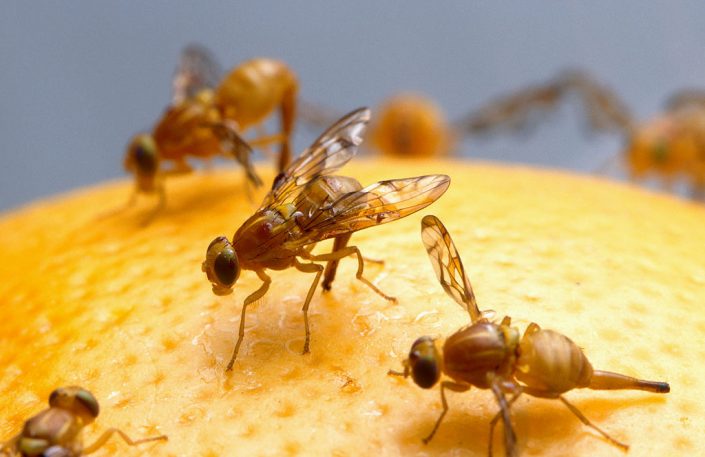A&M biologist’s research proves key to Nobel Prize-honored discovery

Image: Wikimedia Commons
As the second day of a new month dawned, three American scientists found their lives transformed by a single telephone call, the one every scientist dreams of receiving.
At 4:30 a.m. CDT on Oct. 2, Jeffrey C. Hall and Michael Rosbash (Brandeis University) and Michael W. Young (Rockefeller University) were unveiled as co-recipients of the Nobel Prize for Physiology or Medicine for their discoveries of molecular mechanisms controlling the circadian rhythm.”
For Texas A&M University biologist Paul E. Hardin, first author as a postdoctoral fellow at Brandeis on one of the seminal papers cited by the Nobel Committee in awarding the prize, the first call came in just after 7 a.m. CDT, along with the emails—a slow trickle at first, then a steady stream as the worldwide news continued to spread. One of those calls was from Rosbash, Hardin’s postdoctoral advisor at Brandeis, who Hardin describes as “still on cloud nine.”
To date, Hardin has spoken with many media outlets, including The Scientist, The New Yorker, Inside Science and Quanta magazine, based on his close connection to science’s premier international prize. Horseshoes and hand grenades aside, Hardin is nothing but positively upbeat and genuinely pleased for both his colleagues and his profession.
“A Nobel Prize for circadian clocks is great for the field,” said Hardin, inaugural holder of the John W. “Bill” Lyons Jr. ’59 Endowed Chair in Biology and director of the Texas A&M Center for Biological Clocks Research since 2006. “It is indeed exciting to have worked with two of the three winners and to see them and my field honored with such a momentous award. It is a proud moment for circadian clocks.”
Brandeis’ “pit”—a dingy basement-level room within a now-nonexistent biology building harboring an incubator and an eventual Nobel Prize-worthy discovery—is where Hardin cut his teeth in fruit fly (Drosophila melanogaster) research. Because fruit flies undergo many of the same physiological processes as larger creatures, including humans, they serve as model organisms, allowing researchers such as Hardin to observe details that can’t be seen in more complex animals.
Hardin’s research during the past two decades has helped to establish Drosophila as a premier model organism for studying the circadian clock. As a key member of Rosbash’s laboratory from 1987 to 1991, he discovered the first circadian feedback loop in gene expression in the brain of the fruit fly—a breakthrough that established the mechanistic framework for circadian timekeeping, not only in Drosophila, but also ultimately in higher organisms, including humans.
Many subsequent discoveries have profoundly affected our understanding of the role the human clock plays in health and disease, none more so than the 1990 paper he co-wrote with Rosbash and Hall that formed the basis for a large body of research into the molecular nature of circadian timekeeping in both Drosophila and mammals.

